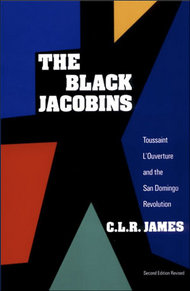
One week on from the Haitian earthquake and, despite the efforts of broadcasters to find miraculous cases of survival, the overall picture is grim. It is hard to think of a more hopeless situation and the consequences for this benighted island will last for generations. Haiti was a nation born of ‘the only successful slave revolt in history’, the Haitian Revolution of 1791-1804 led by Pierre Toussaint L’Ouverture, a former slave who became a general in the French revolutionary army, Jacques Dessalines and Alexandre Pétion.
This remarkable episode is the subject of The Black Jacobins by CLR James, the Trinidadian Marxist historian christened the ‘Black Plato’ who also wrote the finest book ever written on cricket, Beyond the Boundary (arguably the finest book written on any sport). First published in 1938 and currently available in a Penguin edition edited and introduced by James Walvin, The Black Jacobins is still the starting point for anyone who wishes to grapple with Haiti’s history. James, a man of the left who, unusually, insisted that the liberation of the oppressed came only when they had absorbed and mastered the finest culture of the dominant class, was a noted stylist, as this excerpt demonstrates:
‘The stranger in San Domingo [later Haiti] was awakened by the cracks of the whip, the stifled cries, and the heavy groans of the Negroes who saw the sun rise only to curse it for its renewal of their labours and their pains. Their work began at day-break: at eight they stopped for a short breakfast and worked again till midday. 'They began again at two o’clock and worked until evening, sometimes until ten or eleven. A Swiss traveller has left a famous description of a gang of slaves at work. “They were about a hundred men and women of different ages, all occupied in digging ditches in a cane-field, the majority of them naked or covered with rags. The sun shone down with full force on their heads. Sweat rolled from all parts of their bodies. Their limbs, weighed down by the heat, fatigued with the weight of their picks and by the resistance of the clayey soil baked hard enough to break their implements, strained themselves to overcome every obstacle. A mournful silence reigned. Exhaustion was stamped on every face, but the hour of rest had not yet come. The pitiless eye of the Manager patrolled the gang and several foremen armed with long whips moved periodically between them, giving stinging blows to all who, worn out by fatigue, were compelled to take a rest - men or women young or old”. This was no isolated picture. The sugar plantations demanded an exacting and ceaseless labour. The tropical earth is baked hard by the sun. Round every 'carry' of land intended for cane it was necessary to dig a large ditch to ensure circulation of air. Young canes required attention for the first three or four months and grew to maturity in 14 or 18 months. Cane could be planted and would grow at any time of the year, and the reaping of one crop was the signal for the immediate digging of ditches and the planting of another. Once cut they had to be rushed to the mill lest the juice became acid by fermentation. The extraction of the juice and manufacture of the raw sugar went on for three weeks a month, 16 or 18 hours a day, for seven or eight months in the year.’
The misery continues.
 Read History Today articles on Jean-Jacques Dessalines, Haiti and Hispaniola on our Caribbean History Page
Read History Today articles on Jean-Jacques Dessalines, Haiti and Hispaniola on our Caribbean History Page
No comments:
Post a Comment